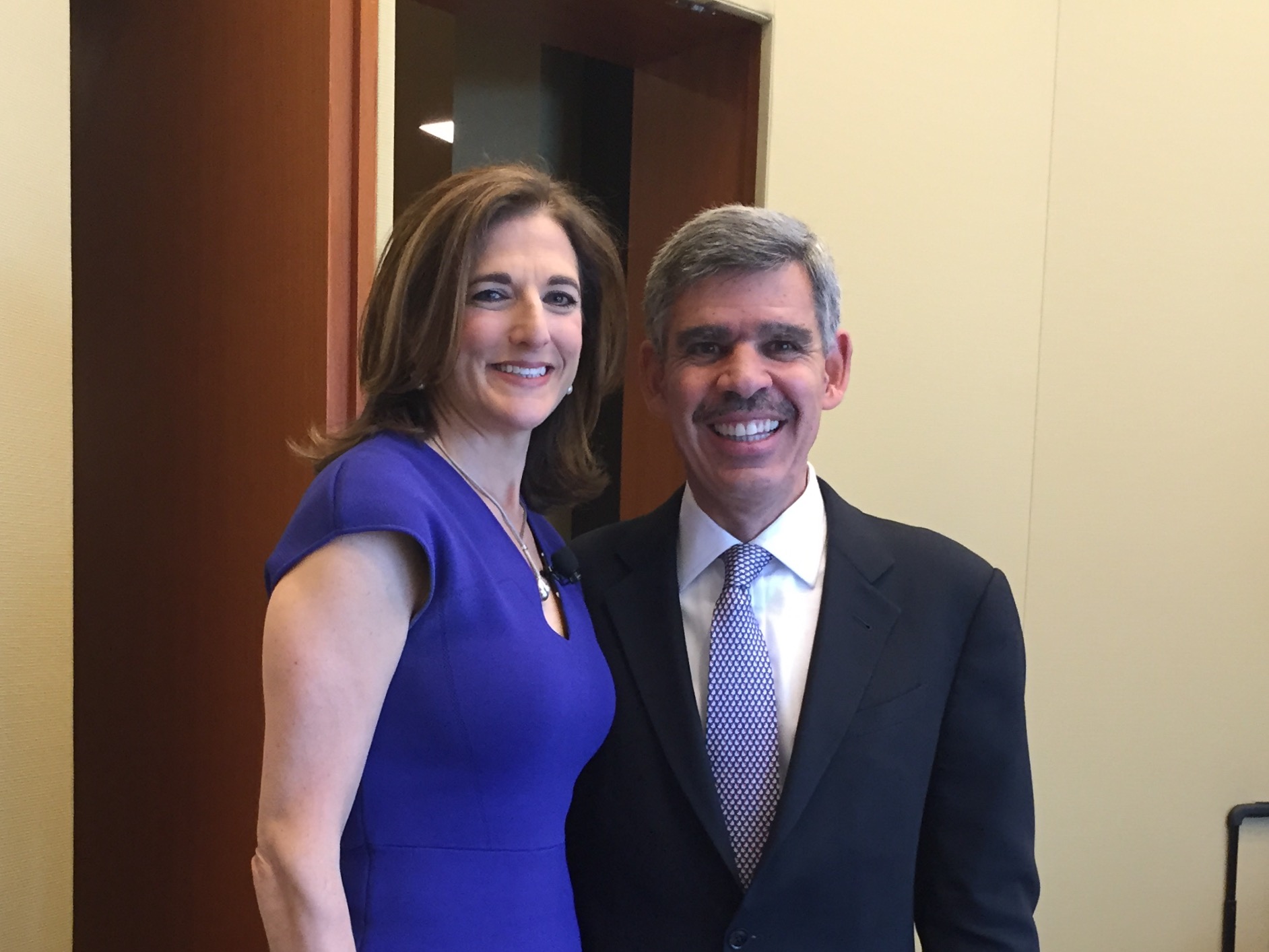There is nothing better than an hour spent talking to Mohamed El-Erian at the annual LinkedIn Finance Connect event. El-Erian has a unique ability to break down hardcore economic concepts into digestible, easy-to-understand analogies. For example, when I asked him about his prediction about worldwide growth this year, he said, “imagine if you were a elementary schoolteacher and I told you that overall, your classroom would be better this year than it was last year. Unfortunately, that slightly better classroom that still has troublemakers." Those rambunctious troublemakers include: Russia/Ukraine, Greece, Brazil, Venezuela, Nigeria – any one of them could disrupt global economy and threaten the progress of the “limping along” economies of Japan and Europe, as well as the improving U.S. economy. One bright spot for El-Erian is China, which is clearly downshifting from 10 percent growth over the past three decades, to a more sustainable 6-7 percent rate. Although many have predicted looming disaster for the world’s second largest economy, El-Erian believes that China will be able to make a soft landing.
He’s less sanguine about Greece, where the probability of three possible outcomes is:
- 45% Greece and Eurozone officials muddle along
- 50% Greece leaves Eurozone (“Grexit”) and a massive dislocation in financial markets ensues
- 5% Greece wades through and comes out better
As Greece teeters on the edge of disaster, other European countries (Germany, Switzerland, Sweden, Denmark) are seen as bastions of safety. In fact, some investors are actually paying countries to hold their money. Mohamed says that there are two types of investors, who buy bonds with negative interest rates: (1) Those who are willing to pay up to ensure that their money is safe and (2) those who are betting that negative returns get more negative. Although negative interest rates have persisted longer than El-Erian though they would, he does not believe that the situation will last.
The US economy should continue to expand this year at a 2.5 percent annualized rate and El-Erian is hopeful that monthly job creation will average over 200,000. The combination will prompt the Fed to increase interest rates at its September policy meeting, but El-Erian noted that this is likely to be “the loosest tightening in history,” so it will take a considerable period of time before conditions look normal again.
As far as the labor market is concerned, while job creation should pick up, stagnant wages are limiting growth. “Income inequality is horrific,” and while this is a decades long trend, in the six years since the official end of the recession, only a small percentage of Americans seem to be back or better off than they were before the recession. El-Erian said, “100 percent of the total income growth during this recovery has gone to the top 5 percent of earners.”
While some companies are actually doing more to help narrow the income gap, El-Erian would like to see an overhaul of the corporate and personal tax systems. On the individual side, lawmakers should consider raising the minimum wage and eliminating some of the benefits, which wealthy taxpayers enjoy, like not paying tax on carried interest and the mortgage interest deduction.
[The April jobs report did not show much progress on the wage front. While the job market recovered in April after getting roughed up in March, the Bureau of Labor Statistics said 223,000 new jobs were added last month and the unemployment rate ticked down to 5.4 percent, the lowest level since May 2008. This time around, the unemployment rate slid for the right reason: 166,000 additional workers entered the labor force and snagged jobs. Average earnings were up 2.2 percent from a year ago, up from 2.1 percent in March - a tiny improvement, but a far cry from 3 percent annualized rate seen during the last expansion.]
Last year, when I interviewed El-Erian, he said that the US economy was approaching a “T-Junction”, where it could veer in one of two directions: (1) growth accelerates, justifying current stock prices; or (2), growth remains sub-par, central bank policy loses effectiveness and stocks tank. This year, he said that the US is moving up the neck of this critical junction and continues to believe that the odds are 50-50 for either outcome. With even chances, the disconnect between markets and economic reality is the biggest risk facing investors and according to El-Erian, you may want to hold a little more cash in your portfolio, just in case the more negative scenario plays out.
MARKETS: In a volatile week, the bulls won out and pushed indexes within striking distance of all-time highs.
- DJIA: 18,191, up 0.9% on week, up 2% YTD
- S&P 500: 2116, up 0.4% on week, up 2.8% YTD
- NASDAQ: 5,003 down 0.04% on week, up 5.6% YTD
- Russell 2000: 1234, up 0.5% on week, up 2.5% YTD
- 10-Year Treasury yield: 2.15% (from 2.1% a week ago)
- June Crude: $59.39, up 0.4% on week
- June Gold: $1188.90, up 1.2% on week
- AAA Nat'l avg for gallon of regular Gas: $2.66 (from $2.61 week ago, $3.66 a year ago)
THE WEEK AHEAD: With earnings season mostly winding down, investors are turn their attention oversees, where once again, problems in Greece and Russia/Ukraine pose risks.
Mon 5/11:
Tues 5/2:
Greece is due to make a 750M euro payment to IMF/Euro Finance Ministers meet
9:00 NFIB Small Business Optimism
10:00 Job Openings and Labor Turnover Survey
11:00 Household Saving and Debt Report
Weds 5/13:
Macy’s
8:30 Retail Sales
Thurs 5/14:
Kohl’s, Nordstrom
8:30 Producer Prices
Fri 5/15:
8:30 Empire State Manufacturing
9:15 Industrial Production
10:00 Consumer Sentiment
![Jill on Money [ Archive]](http://images.squarespace-cdn.com/content/v1/59efbd48d7bdce7ee2a7d0c4/1510342916024-TI455WZNZ88VUH2XYCA6/JOM+Blue+and+White.png?format=1500w)






